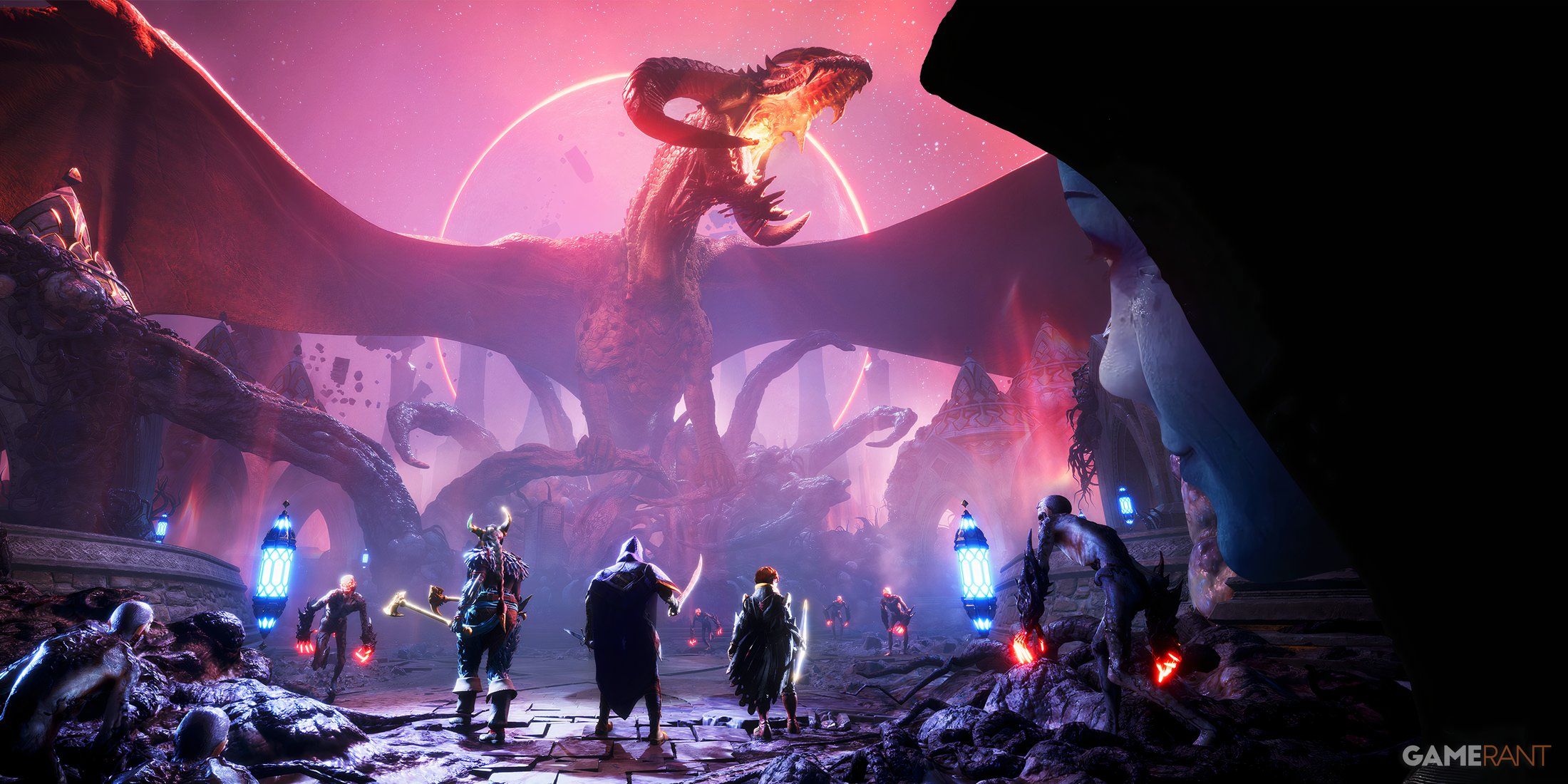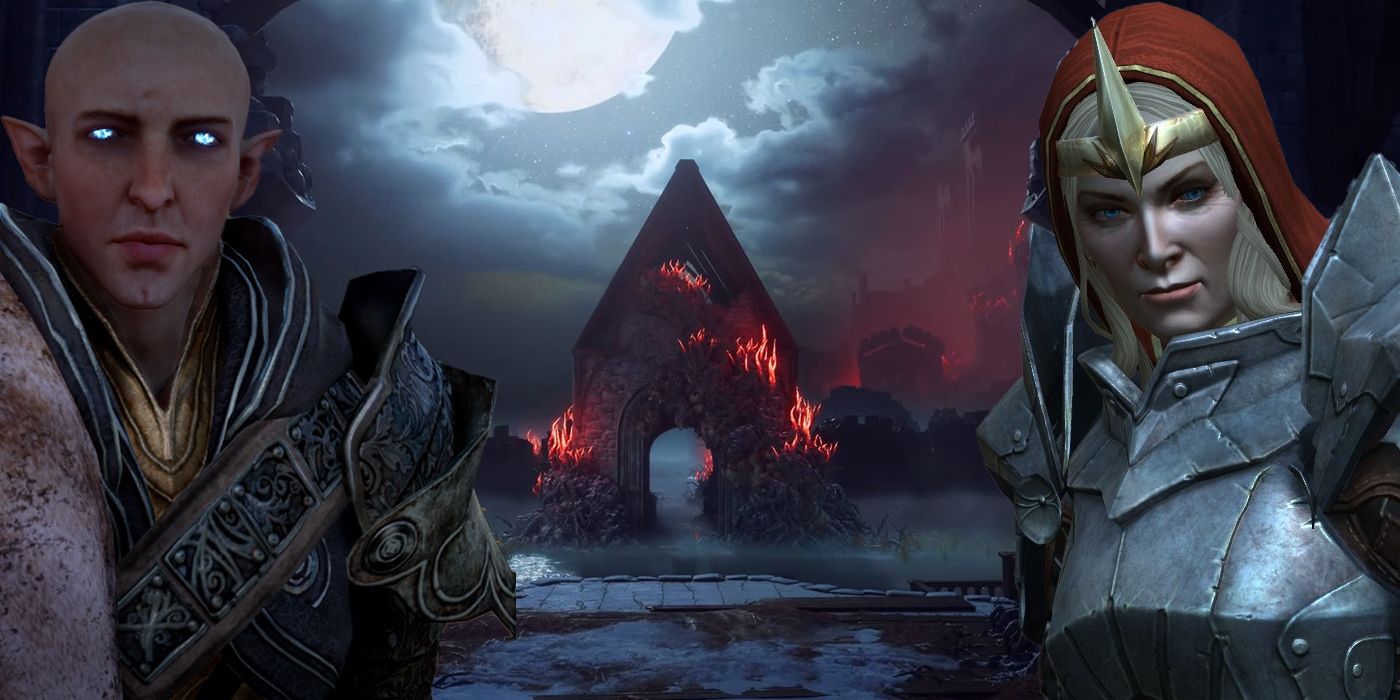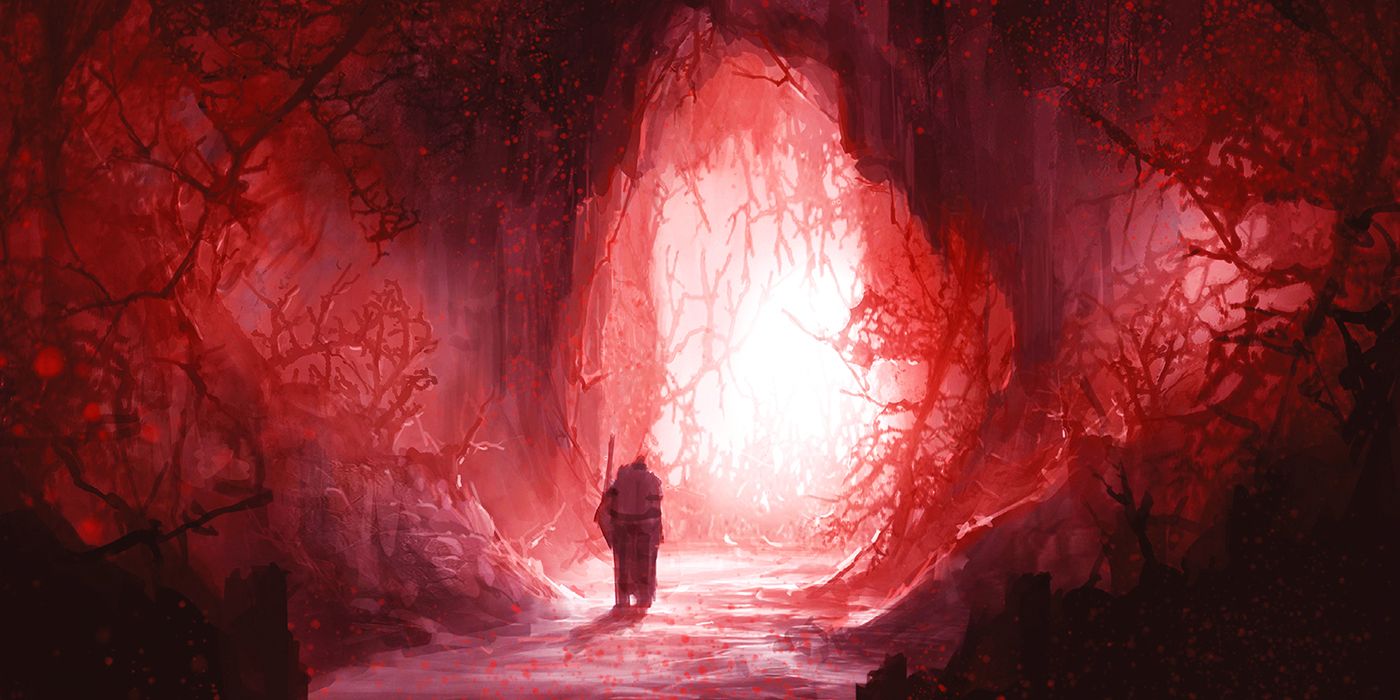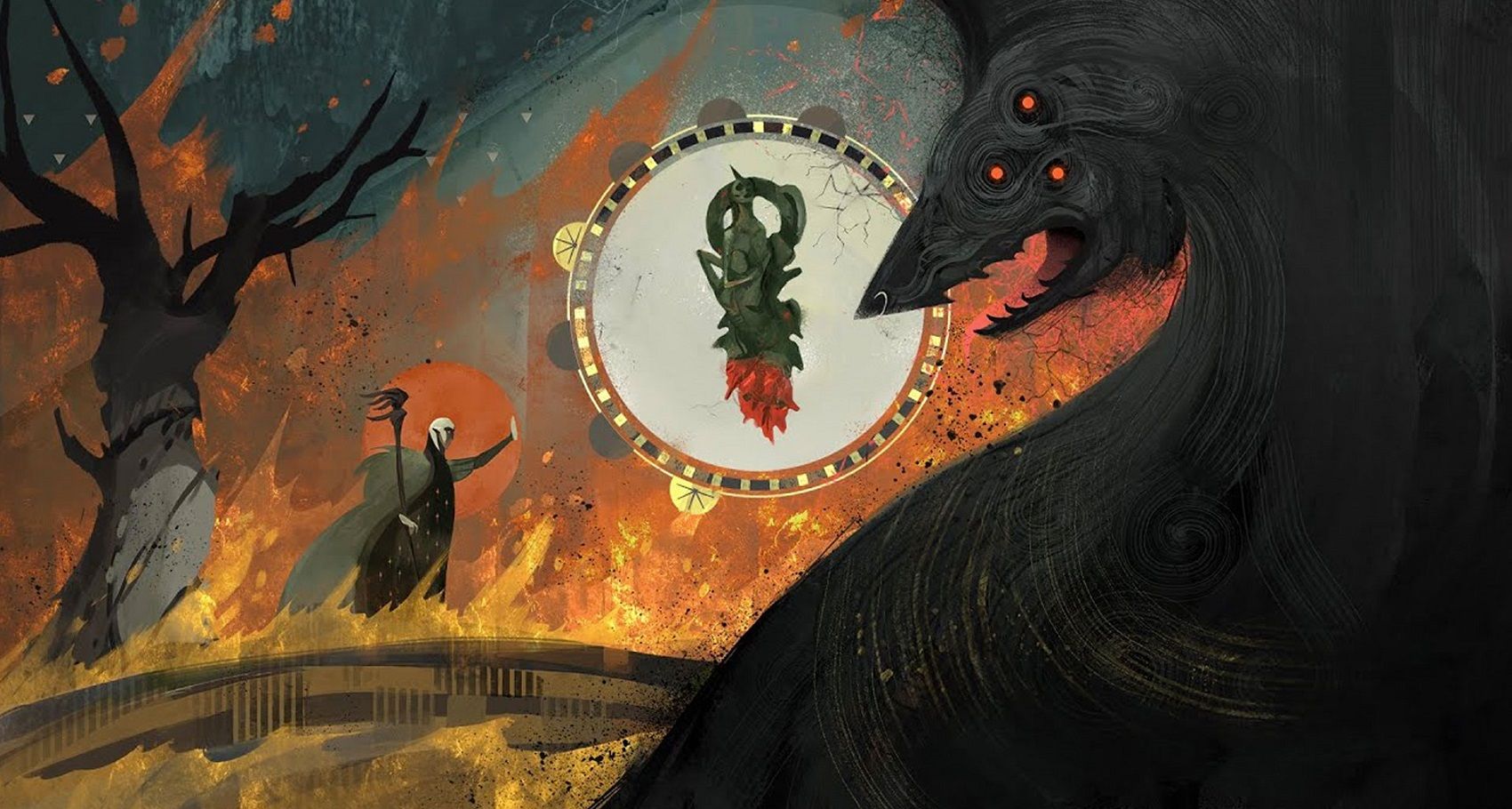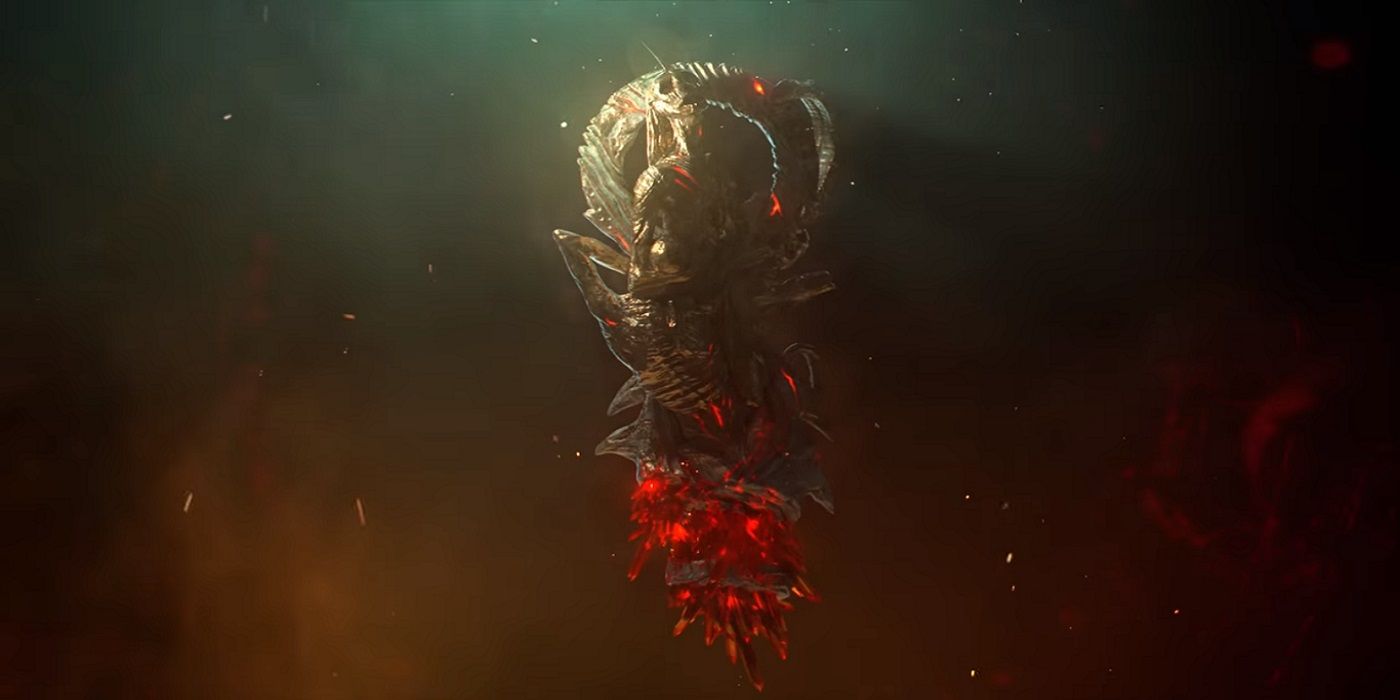While the phrase Dragon Age 4 was never mentioned at EA Play, the game did not go unnoticed by fans. In a short, next-gen clip of EA projects, three "work in progress" screenshots were revealed of DA4. These showcase a dark tree, a chapel covered in red lyrium, and what appeared to be a huge heart of Red Lyrium beating. However, while next to nothing has still been confirmed for the game, it's not the first appearance of Red Lyrium.
In fact, in its 2018 teaser, Dragon Age 4 shows the Red Lyrium Idol between Solas and his dread wolf form, seemingly indicating its return to the story. As such, it seems clear that Red Lyrium is going to be a bigger focus point than it has been the past. As while it has been present in the story as a de facto device of manufacturing evil, there's clearly more to it than that.
Dragon Age 2: The Red Lyrium Idol
Red Lyrium makes no appearance in Dragon Age: Origins, with the first appearance being at the end of the first story arc in Dragon Age 2. Down in the Deep Roads, Hawke and Varric discover it before Bartrand betrays his brother and steals it. It's revealed that it caused Bartrand to hear voices, even though he sold it, but kept a small shard for himself. It turns out that the buyer was none other than Knight-Commander Meredith who used its power during the Mage Uprising in Kirkwall, although it seems she has some control over its influence. Regardless of which side Hawke falls on, Meredith is destroyed by the sword.
Dragon Age Inquisition: The Corruption of Red Lyrium
In Inquisition, the Breach has caused huge amounts of Red Lyrium to appear all over Thedas, with it being forced upon and used by Templars, corrupting them. Corpypheus will use these Templars as part of his army if players choose to aid the mages against Alexius, with Samson seemingly carrying the same idol in sword form as Meredith. It's clearly more powerful, though, believed to been enhanced due to blood and Tevinter Magic.
Here, Red Lyrium plays a small role as a sort of conduit to corrupt the Templars, but more is learned about it. Bianca discovers that Red Lyrium is corrupted by the blight, thus proving theories that Lyrium—in its pure blue form—is alive. However, Red Lyrium spreads like a disease on the planet. Blue Lyrium will even grow in the fade, although there it carries no song. Secondly, Lord Seeker Lucuis Corin discovers that Seekers of Truth, who have come into contact with a Spirit of Faith, are immune to Red Lyrium. This carries a ton of implications, as it means that something about Blighted Lyrium and Spirits do not mix.
Dragon Age 4: Solas and the Red Lyrium
As aforementioned, it seems almost certain that Red Lyrium is going to have a much bigger role in Dragon Age 4. The original teaser and the new Dragon Age 4 screenshots make this seem likely. On top of that, Solas references the idol in Dragon Age: Tevinter Nights, and there's a solid chance that he'll have it come the next game. Red Lyirum, and potentially more so the idol, is known for thinning the Veil near it. Enough Red Lyrium, combined with Solas' inherit powers and that of Mythal/Flemeth, may be enough to undo the Veil, letting loose whatever chaos that would ensue.
What is Red Lyrium, and How Does It Connect a Ton of Dragon Age Theories?
Of course, despite this history, there's the big question of what it is and why is it important enough to appear across multiple games? Lyrium, a powerful substance on its own, can boost a mage's power, imbue a Templar with their special abilities, and can only be mined by Dwarves (through a secret that they do not share). The Chantry believes it to come from the waters of the fade, and many agree that it is at least connected to it in some capacity.
Dwarves believe it is a gift from the Stone, and Valta—the Shaper met in Inquisition's The Descent DLC—says Lyrium is the blood of the Titans, the predecessor, psuedo-gods of the Dwarves. And that's the crux of why Lyrium (and thereby Red Lyrium) is so important: it connects multiple cultures, races, and more throughout Thedas. The Chantry believes the Maker exists in the Golden City, but Corypheus reveals that the Throne was empty and the City destroyed. Many believe this somehow connects to the Elven Gods, who themselves are likely connected to the Old Gods. And the Old Gods rests in the Deep Roads, where Titans somehow exist as giant creatures of Stone (based on the Descent)
In short, while there is a huge amount of world-building, varied belief systems, and radically different cultures through Thedas, Lyrium connects it all as a sort of life blood. Red Lyrium, then, is a corruption of not just magic in the world, but one unifying theme across every culture. How that comes into play, what surprises await players in Dragon Age 4, and what BioWare has up its sleeves remains to be seen, but when it comes to understanding the world of Thedas and the speculation of its various elements, there's one thing to be certain of. BioWare is the Morrigan/Anders/Solas of the party, and there's likely to be some twists, turns, and surprises down the road with Red Lyrium.
Dragon Age 4 is in development, presumably for next-gen consoles.



